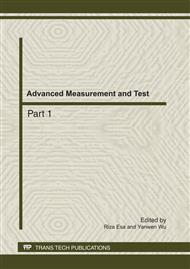p.147
p.153
p.158
p.165
p.170
p.175
p.182
p.188
p.195
Theory Study on Structure Property of N-Ethyl Morpholinium Ionic Liquid of Different Alkyl Length
Abstract:
The ionic liquid is a green solvent and catalyst, its application is abroad. By using at density functional theory (DFT) at B3LYP/6-31G* levels, The N-ethyl morpholinium ionic liquid with different alkyl length have been studied. The computed results indicate that the ionic liquid formed by ethyl N-ethyl morpholinium and a chlorine ion has nine structures and eighteen positions. Three hydrogen bonds have been formed in each position, the hydrogen bond between chlorine ion and hydrogen atom in morpholinium ring is strongest and shortest. The hydrogen bond between chlorine ion and hydrogen atom in ethyl is weaker, which can strengthen the stability of ion pair. The nine structures of the ionic liquid formed by ethyl N-ethyl morpholinium and a chlorine ion are compared, the ionic liquid of MO1,2NC和MO1,2LC is more stable, the energy released of MO1,2LC is biggest, the energy released of MO1,2NB is smallest. For ethyl N-ethyl morpholinium, propyl N-ethyl morpholinium and butyl N-ethyl morpholinium, as the alkyl length becomes longer, the binding energy between chlorine ion and morpholinium with different alkyl length becomes weaker.
Info:
Periodical:
Pages:
170-174
Citation:
Online since:
July 2011
Authors:
Price:
Сopyright:
© 2011 Trans Tech Publications Ltd. All Rights Reserved
Share:
Citation:


